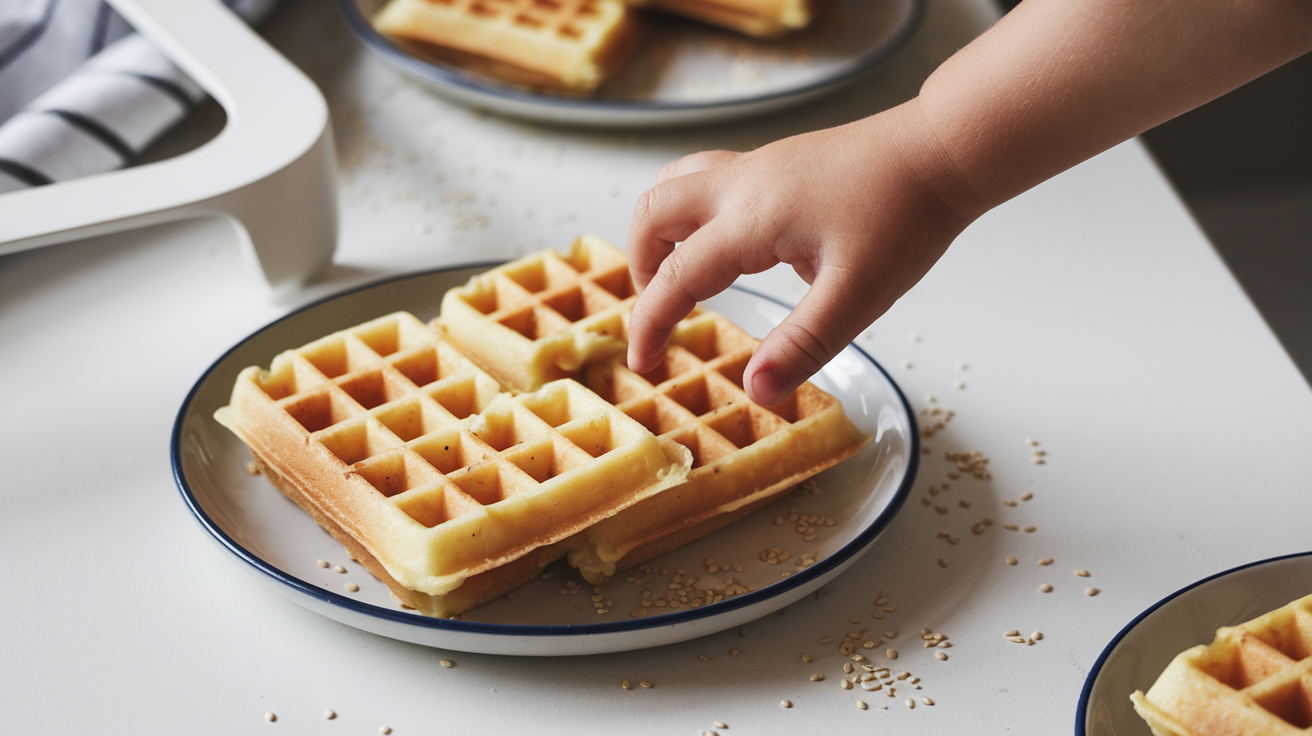
Why Won’t My Toddler Eat?
If you’ve asked yourself this question recently, you’re not alone. Many parents experience a phase where their little one’s eating habits seem to change drastically. The truth is, toddler eating patterns are complex, shaped by developmental milestones, psychological factors, and natural nutritional needs. Let’s dive into the science and psychology behind this behavior to help you navigate this phase with confidence.
Understanding Toddler Eating Patterns
Toddlers are notoriously unpredictable when it comes to eating. One day they devour everything on their plate, and the next, they refuse even their favorite foods. This inconsistency is normal and often rooted in:
Developmental Growth: Around the age of one, a child’s growth rate slows compared to their rapid growth during infancy. This natural slowdown means their caloric needs decrease, which can translate to a reduced appetite. Studies show that by age two, toddlers consume about 20% fewer calories than they did as infants.
Psychological Independence: Mealtimes become an opportunity for toddlers to assert their independence. Refusing food can be a way of expressing autonomy. According to child development experts, this phase is crucial for fostering decision-making skills.
Natural Grazing: Toddlers’ small stomachs and high energy levels make grazing—eating small portions throughout the day—a more natural eating pattern than consuming large meals. Research suggests this approach aligns with their developmental needs and energy output.
Dining Out with Toddlers
Taking toddlers to restaurants can be a test of patience. Their curiosity and short attention spans make it difficult for them to sit still for an entire meal. Here are some tips backed by child behavior specialists:
Plan Ahead: Choose family-friendly restaurants with play areas or kid-friendly menus. This minimizes stress for both parents and toddlers.
Engage Them: Bring small toys, coloring books, or other quiet activities to keep them occupied while waiting for food.
Order Quickly: Opt for simple and familiar dishes that your toddler is likely to enjoy, and ask the server to bring the toddler’s food as soon as possible.
Know When to Go: Aim for times when your toddler is well-rested and not overly hungry, as fatigue or excessive hunger can amplify fussiness.
Some child psychologists recommend limiting dining out during this phase to avoid overstimulation and frustration for both parents and children.
Nutritional Needs of Toddlers
Understanding what your toddler truly needs nutritionally can help reduce mealtime stress. Unlike adults, toddlers don’t require large portions. Instead, the focus should be on nutrient density. Key facts include:
Calories: On average, toddlers need 1,000 to 1,400 calories per day, depending on their age, size, and activity level.
Macronutrients: Their diet should include carbohydrates (45-65% of daily intake), proteins (10-20%), and fats (30-40%), as per pediatric dietary guidelines.
Micronutrients: Ensure adequate intake of key vitamins and minerals, such as calcium (700 mg/day), iron (7 mg/day), and vitamin D (600 IU/day), essential for bone growth and overall health.
Pro Tip: Offer small, balanced meals throughout the day rather than three large ones. This aligns with their natural eating habits and prevents overwhelm at mealtime.
Avoiding ‘Clean Plate’ Policies
The « clean your plate » rule is a common parenting approach but has been shown to contribute to unhealthy eating behaviors. Here’s why experts advise against it:
Disrupts Hunger Cues: Forcing a child to eat beyond their natural hunger leads to a disconnect between their body’s signals and eating habits.
Increases Risk of Overeating: Studies indicate that children who grow up with clean plate policies are more likely to overeat as adults, potentially leading to obesity.
Creates Negative Associations: Mealtimes should be enjoyable and stress-free. Pressure to finish everything can make eating feel like a chore.
Instead, focus on providing balanced options and trust your toddler’s innate ability to self-regulate their intake. If they’re full, it’s okay to stop—their body knows what it needs.
Healthy Eating Practices
Encouraging healthy eating in toddlers doesn’t mean perfection. It’s about creating a positive and supportive environment around food. Here’s how:
Model Good Habits: Research shows that toddlers are more likely to try new foods when they see their parents enjoying them. Lead by example.
Introduce Gradually: It may take 10-15 exposures for a toddler to accept a new food. Stay patient and persistent.
Offer Choices: Present two or three healthy options and let your toddler decide. This fosters independence and reduces resistance.
Keep Portions Small: Start with small amounts to avoid overwhelming them and offer more if they’re still hungry.
Make Mealtimes Fun: Use colorful plates, playful food shapes, or storytelling to make meals engaging.
Check out our curated list of « Best Toddler-Approved Meals » designed with both nutrition and taste in mind. From colorful veggie-packed muffins to protein-rich finger foods, these recipes make mealtime stress-free and enjoyable for everyone.

